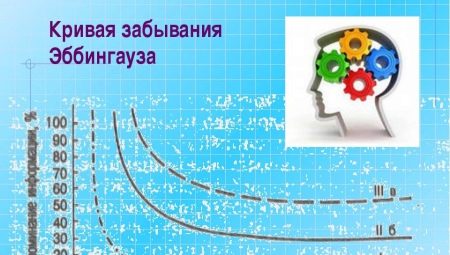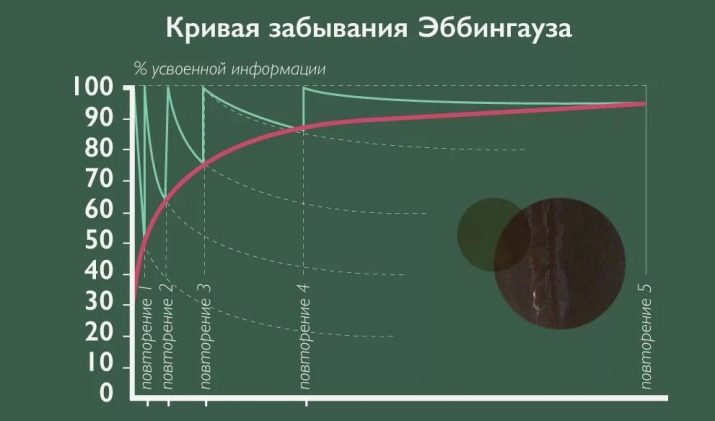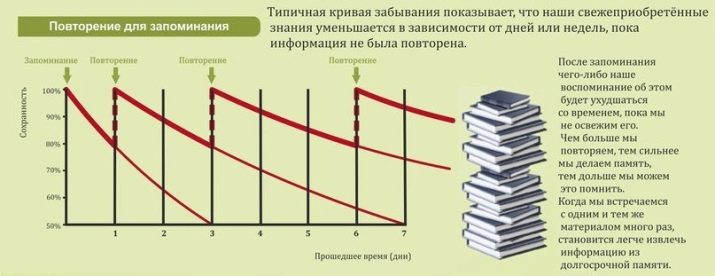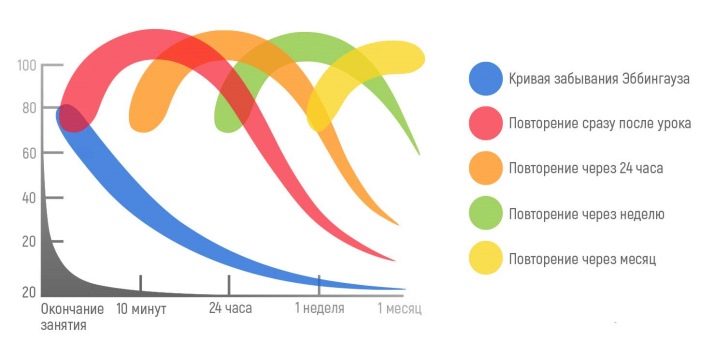Ebbinghaus' Forgetting Curve: Description and Application for Memorization

How can you assimilate the necessary information once and for all, how not to put unnecessary knowledge in your head? Surely such questions torment not only students and intellectuals. The answer back in the 19th century was given by a psychologist from Germany Hermann Ebbinghaus. He built the so-called "forgetting curve".
What it is?
The German was interested in how a person's memory works, what he remembers and forgets in the first place, and what is more difficult. In order to understand this process, the scientist conducted various experiments. To begin with, he gave his wards the task to learn a number of completely meaningless syllables. He composed them from two consonants and one vowel.
One of the conditions was complete nonsense - combinations of sounds were not supposed to cause an association with any existing word. Therefore, he suggested such syllables as "ken", "khat", "zyf", "chutz", "fyut" and so on.
The task of the subjects was to memorize them one hundred percent and pronounce them without a single hesitation. Moreover, this was always done at the same time, under the same external conditions.
Thus, a keen psychologist tried to exclude factors influencing the memorization process from the outside - nothing influences the process itself.
If the set of meaningless words ended, then the scientist changed their places and asked those present to learn them too. After the participants in the experiment coped with the task, they had another test. Repeat unrelated speech after a certain time. So Hermann Ebbinghaus discovered his curve, which reflects the process of forgetting information by a person. The graph looks like this.

The fastest way our brain parts with information is within an hour after receiving it. He cuts off more than half - about 60% unnecessary information. After 10 hours, it leaves only 35% of the text we memorized. But then the process slows down greatly. Even after 6 days, about 20% remains in the head a set of syllables received almost a week ago.
Interestingly, this result practically does not change and a month later. The brain will still produce 20% of the sound set. However, this was not the only goal of the study.
There were several tasks.
- To study how much the human brain is, in principle, ready to accommodate.
- Find out what needs to be done in order to extend the storage time of this information. The German specialist used the repetition method for this.
- Set repetition times for better memorization of information.
- Find out how the information should be located so that it is easier to remember.
Repetition techniques
To break the laws of forgetting, obtained as a result of plotting his curve, Ebbinghaus came up with another rule - the preservation of the information received.
In the Russian interpretation, it sounds like this: "repetition is the mother of learning."
Psychologists now recommend two repetition schedules. The first is optimal for those who needs to cope with the task quickly, and the information they received does not have to remain in the memory forever.

The second is more suitable for those who have time to study and need to use this knowledge for many years.
The "quick" method is designed for two days. The scheme is as follows.
- The first repetition is done immediately after the book is closed.
- The second must be repeated after 20 minutes.
- The third repetition should take place 8 hours after the second.
- The fourth repetition is carried out exactly one day after the third.
The method for a longer and more thorough memorization at first is not much different from what is "faster", but then be more attentive and patient, everything looks like this.
- The first repetition is carried out immediately after reading.
- Repeat the second one in 20 minutes. It is possible to increase the interval to half an hour.
- The third happens the next day.
- Repeat the fourth after another 2 weeks. An increase in the interval up to 3 weeks is possible.
- The fifth repetition must be done after 2 months. An increase in the interval up to 3 months is possible.
But if you need to "write" some knowledge in your memory for a long time, the scheme is suitable for you, which was developed by the Americans Bob Sullivan and Hugh Thompson. To use such a scheme, however, it is worth entering all the dates of execution in the diary. The one on your phone will also work and will be even more convenient, the electronic diary will give you a signal to take action.

The graph looks like this.
- The first repetition is carried out 5 seconds after reading the information you need.
- The second repetition is performed after another 25 seconds.
- The third repetition should be done 2 or 3 minutes after the second.
- The fourth happens after 10 minutes.
- Do the fifth repetition after another hour.
- Don't forget to do the sixth after 5 hours.
- Repetition number 7 should take place in a day.
- Repeat the eighth after 5 days.
- Repetition number 9 occurs when another 25 days have passed (that is, a month after the first acquaintance with the material).
- The tenth repetition is carried out after another 4 months.
- Repetition number 11 - final. To be done after 2 years.
If you use such a schedule, then the information you have learned will remain with you for the rest of your life.
There are a few more tricks that the human brain has not been able to hide from scientists.

Patterns of memorization
You will be able to use the developments of scientists more effectively in terms of facilitating memorization if you know exactly what patterns in memorizing information exist. There are several of them, they are quite simple.
- A person remembers more and better meaningful texts than the same syllables of Ebbinghaus, for example. I wonder if all of his subjects went through the experiment to the end? Perhaps some could not withstand such an attack on the brain. The so-called "cramming" is much less effective than meaningful memorization.
- The amount of information and the rate at which it is memorized are not directly related to each other. That is, learning two poems is not at all twice as difficult as one. This will take more time and energy than if you simply multiply both by two. The more - the longer and more difficult.
- The number of repetitions should be limited. Rather, there will be no sense in excessive zeal. Do not read for the hundredth time an excerpt from a book that you have already read to the bone. The result will not be any different from what you got after the twentieth repetition, it will not get better.
- The information that we really need is stored in our head much longer than the information that we need just to pass the exam. Therefore, if you want to remember something well, find a practical subsequent application for it in life.
- The volume of memorized information in a certain period of time will be greater if this same information is diverse. Change the topics of the assignments, alternate them, and then it will be easier for you to cope.
- It is better to remember what is at the beginning and closes the material. Check it out for yourself, ask someone to make you a list of any 10 words. No one to ask? Use the following kit: "Light bulb, keyboard, wood, shop, desk, rag, head, computer, broom, garden bed." Close your eyes and try to reproduce what you read.
With a high degree of probability, the first words that come to your mind will be the words "light bulb" and "garden bed". By the way, the discovery of this pattern is also attributed to Hermann Ebbinghaus. In his writings, it is called the edge effect.










Very useful information. I have been interested in the topic of fast memorization for a long time. At the university it was very difficult to remember huge amounts of information, all possible laws and formulas. I had to cram everything, sit for several days. Then, I realized: I needed to change something and started looking for information. It turned out that remembering this is not so difficult.